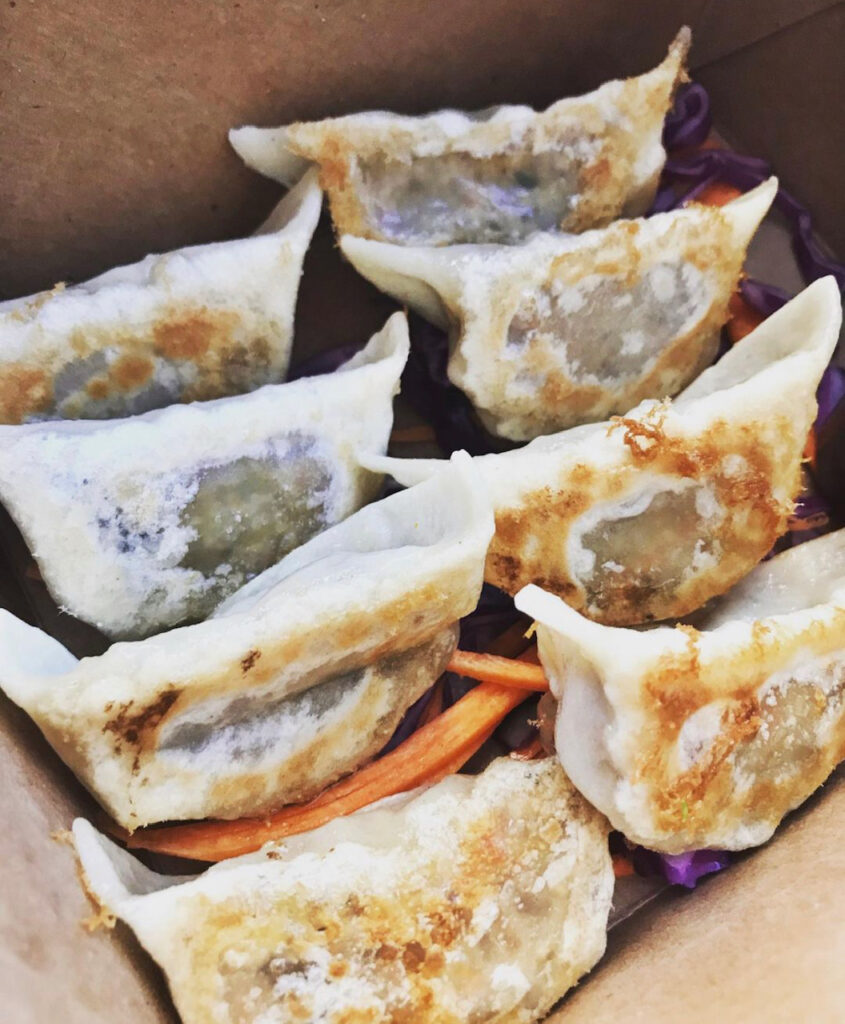At Alice and Friends, we believe that food should nourish not just people, but the planet too. That’s why, as a vegan restaurant, our values don’t stop at what we serve on the plate; they extend to how we package it.
You may have noticed we use eco-friendly, compostable containers for all our takeout and delivery orders. And yes, they cost more than traditional plastic or Styrofoam but for us, it’s important that we stay true to what we believe.
Here’s why we proudly choose green containers and why it matters:
Veganism Isn’t Just About Food, It’s About Impact
Our mission as a vegan restaurant is rooted in compassion for animals, for people, and for the planet. It would be questionable if we served 100% plant-based meals and then wrapped them in petroleum-based plastic or foam that lingers in landfills for centuries.
Using green, compostable containers helps us stay aligned with our values. It supports the value of minimizing harm, reducing waste, and treading more lightly on the Earth.

Our Compostable Containers Match Our Purpose
Most of our packaging is made from renewable, compostable materials like sugarcane fiber (bagasse) or recycled paper. These materials break down much more quickly than plastic, leave a much smaller footprint, and are commercially compostable.
Manufacturing eco-friendly containers often involves:
More specialized or newer technology
Smaller-scale production (less economies of scale)
Certifications and compliance with environmental standards
This production process typically costs more compared to petroleum-based plastics or Styrofoam, which are mass-produced. Nonetheless, we choose to go the green way because it aligns with our purpose.
Our Community Cares A Lot
We’re lucky to be part of a community of both vegan and non-vegan that genuinely cares about sustainability, animal welfare, and environmental justice. Many of you have asked us where our packaging comes from and whether it’s compostable and we feel comfort in knowing that you care as much as we do.
Using eco-friendly containers isn’t just a behind-the-scenes decision; it’s part of the experience we offer.
Compostable Containers are More Expensive but It’s the Right Kind of Expense
As mentioned before, green containers do cost more. There aren’t as many options or inventory available and this can get stressful. Nonetheless, we try to see it as an investment for the planet. That extra cost goes toward:
Reduce Plastic Pollution
Traditional plastic takes hundreds of years to break down. Eco-friendly materials like compostable fiber or PLA break down much faster, often within months.
Support Sustainable Packaging Producers
Many sustainable containers are made from renewable resources (like sugarcane or cornstarch), which require less energy and produce fewer emissions during manufacturing.
Compostable or Biodegradable
Some eco-containers can be composted in industrial facilities, turning waste into usable soil rather than adding to landfills.
We’d rather spend a little more doing the best we can than taking the easy route. Every container, bag, and straw is a small vote for a better future for the next generation.
Our Vegan Restaurant is Always Looking to Improve Sustainable Practices
Sustainability is a journey. We’re always on the lookout for better and more innovative eco-friendly packaging options. As composting infrastructure improves and more restaurants make the switch, we hope green containers will become the norm and more cost-effective too.
Until then, we’re committed to leading by example, even when it costs more. Every time you order from us, you’re part of something bigger. You’re supporting a food system that’s better for the Earth, and you’re showing that ethics and business can go hand in hand. Additionally, we offer a $.25 credit every time you bring your own containers. An initiative we have been doing for years!
So the next time you enjoy our Popcorn Nuggets, Kung Pao Ding, Or Ube Cake in one of our compostable containers, just know: it’s not just what’s in the box that matters, it’s the box itself, too.
